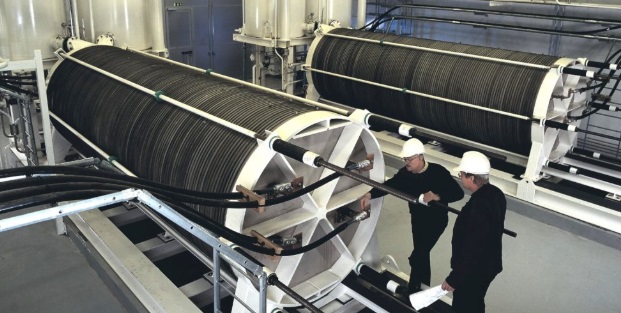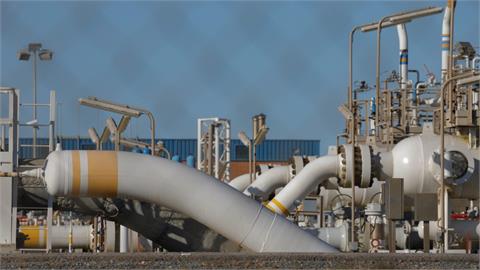For decades, hydrogen has been sold to us as the energy carrier of the future. You might not want to hear it anymore, because the future never seems to start. But times will change as recent developments in Germany indicate, writes Berlin-based renewable energy consultant, Stephan Franz
It doesn’t really look good for the hydrogen economy (at the moment). For decades, in numerous research projects and publications, hydrogen has been touted as the energy source of the future. The problem, it is often noted, is that the efficiency of hydrogen production is too low.
Typical efficiencies of electrolyzers lie between 75 and 80%. Further losses of between 5 and 35% result from the compression or cooling of H2, molecular hydrogen, in order to store and transport the gas in a reasonable way.
For on-site use or a direct feed into the gas network, a conversion efficiency of 70% can be assumed. In the case of a reconversion of hydrogen into electricity through fuel cells, another 50% of the energy is lost as heat (energy), resulting in an overall process efficiency of 35%.
In the automotive sector, lead is long gone. We have been promised fuel cell cars by established car manufacturers for decades, and now others are showing us how fast technology can disseminate with battery-powered electric mobility.
According to industry estimates, there are around 60,000 battery-powered e-cars on German roads and, depending on the source, there are 5,000-8,000 publicly accessible charging stations, some with several charging points. By contrast, the roughly 300 hydrogen-powered cars and around 45 hydrogen refueling points in Germany are lagging behind significantly.
This is partially due to the high prices of the cars: The cheapest H2 car costs around €65,000 in Germany, while battery-powered e-cars are available from around €20,000.
Accordingly, the German economic magazine "Wirtschaftswoche” announced the "death of a fuel cell” last year, "invented in 1966, abandoned in 2017”.
The important economies of scale stemming from the use of hydrogen technologies in cars will be dropped for the moment. The problem is the shifting competitive environment: The price collapse of lithium batteries of around 20% per year with current storage costs on an industrial scale between €0.05-0.10 per kWh and efficiencies above 90% worsens the outlook for all non-lithium storage technologies.
Further, even the second important competing product for renewable gas is currently too cheap: fossil natural gas. Due to fracking and LNG transport, world market prices for natural gas have fallen rapidly: The average import price in Germany in 2016 was around €0.015 per kWh, i.e. 1.5 eurocents per kWh.
With current costs of water electrolysis around 10 euro cents per kWh without electricity costs, hydrogen in the electricity and heat sector will not be an economic alternative for some time to come.
Even the five cents presented during the lastpv magazineFuture PV roundtable, which can only be achieved under optimal conditions (PV systems in sunny areas with large, continuously running electrolyzers), seem like a joke when compared to low natural gas prices. Thus, the lower-scale use of hydrogen in the energy system remains unprofitable.
This applies to the electricity sector in particular, but in the heat sector, too, it is better to continue heating with efficient CHP systems. In the medium term, only emission taxes or other ways of increasing the price of natural gas might change this.
The missing business case for hydrogen in the energy industry is reflected in the economy of power-to-gas (P2G) projects in Germany. According to the German Energy Agency’s power-to-gas strategy platform, there are 33 pilot projects in the country, of which two-thirds were started between 2011-2014. In 2017, only one new pilot project was started, at the steelworks of Salzgitter Flachstahl in Lower Saxony.
Please stay tuned anyway
But this is just a snapshot, characterized by short-term, well, maybe medium-term considerations. In the long term, the chances are there. After all, hydrogen (H2) is the most common chemical element that occurs only in bound form in nature.
Through the electrolytic process that was invented more than 100 years ago, chemical compounds can be split by means of electric current. Thus, hydrogen can be produced using cheap renewable electricity and, you guessed it, water.
When reconverted into electricity using fuel cells, hydrogen still has the potential to constitute the "missing link” of the energy transition. The focus here is on the seasonal storage of energy for the winter months.
The competing product for offsetting fluctuating RE production is fossil natural gas, whose storage infrastructure can be used at least in part. In the Wesermarsch in North-Western Germany, for example, conventional utility, EWE is testing whether hydrogen can be stored in the huge underground caverns that were built as natural gas storage facilities.
Such applications for hydrogen in the area of power-to-gas (P2G) were discussed during several panels at the recentEnergy Storage Europe event, held last month in Düsseldorf. This indicates that hydrogen applications in the energy system tend to be seen as having potential in sector coupling in the medium term.
Thus, this is the time to keep the use of technology open and evolving. The key element here should be the development of attractive segments in which hydrogen can already be used effectively (today): the substitution of conventional hydrogen produced from natural gas for industrial processes, for example, through stricter legislation on the decarbonization of the chemical industry.
This might include the admixture of hydrogen into the natural gas grid up to 9%, by the gradual and regionally differentiated increase of the current admixture limit of 2% (in Germany). And the use of hydrogen in large transport vehicles.
Even though battery electric cars are currently taking over, other applications in the transport sector are more difficult to develop with batteries. For example, in shipping and rail, the hydrogen economy could reach market maturity faster. Alstom, for instance, is currently developing a H2 regional train for non-electrified routes, which enjoys brisk demand from transportation authorities in Germany.
The pioneers of the electric energy transition continue to seek new solutions. We should not forget: For decades, PV too was considered to be a far too expensive future energy. In other words: hydrogen – please don’t give up!
(pv magazine.com, April 9, 2018)




